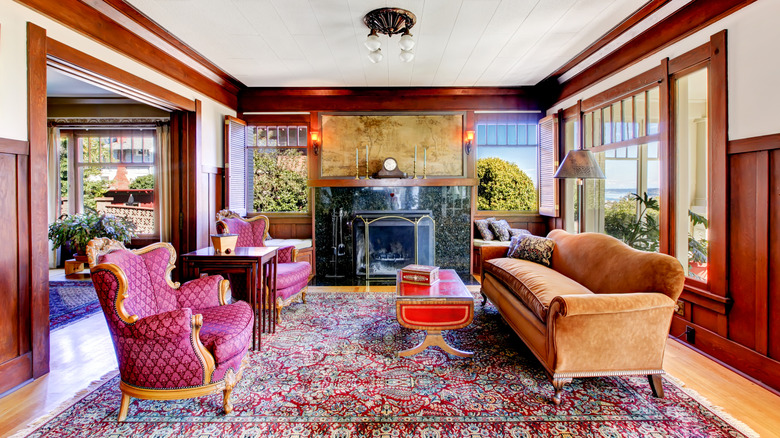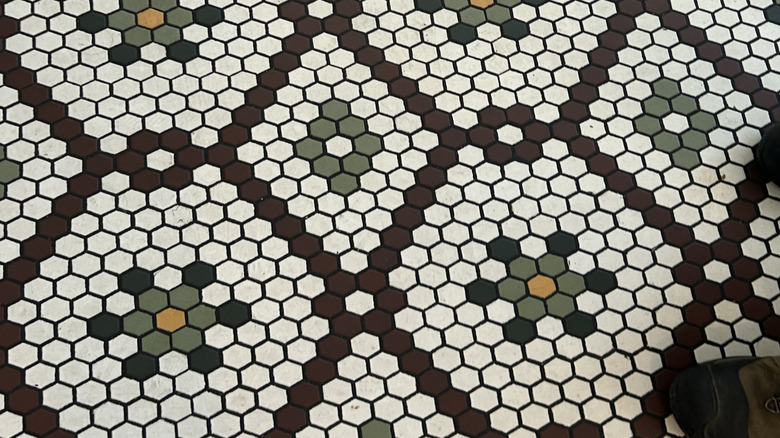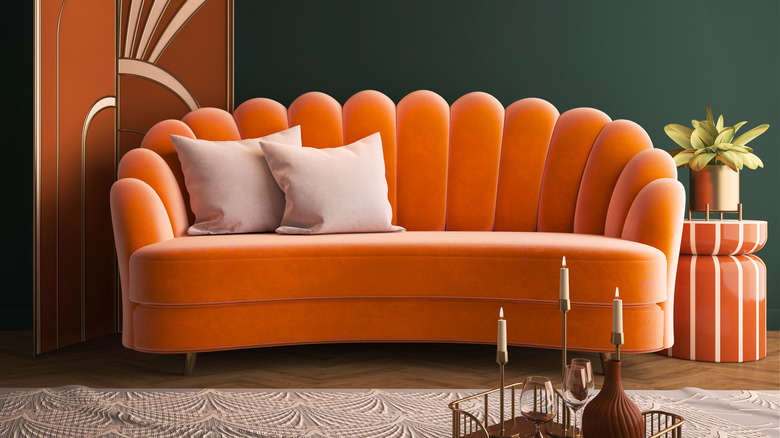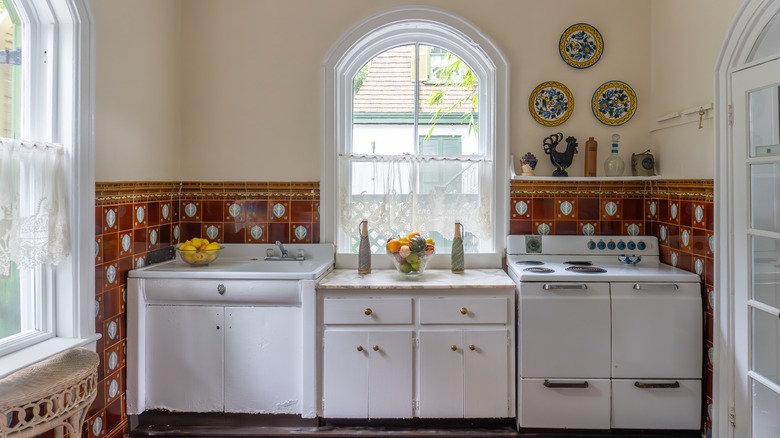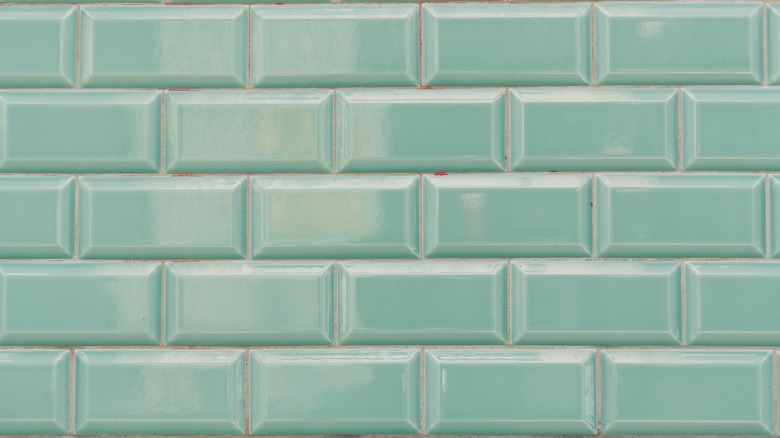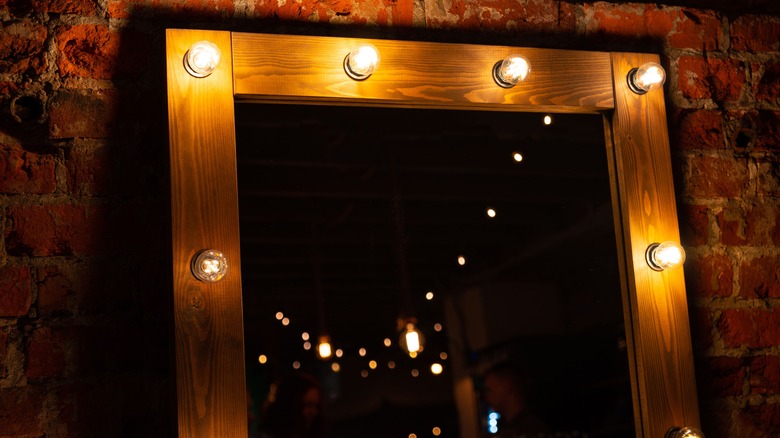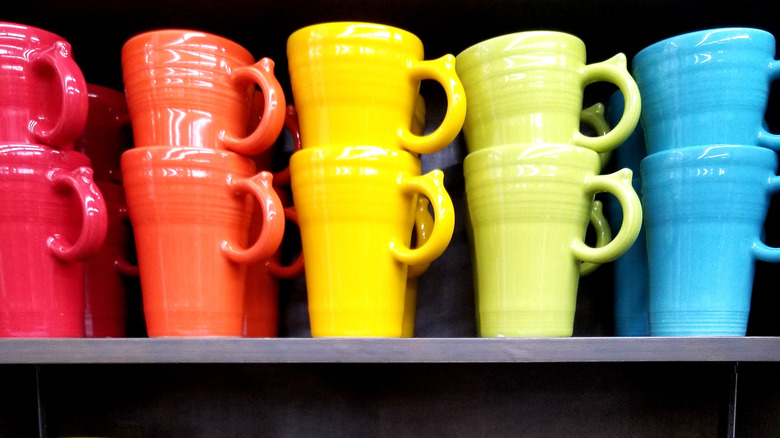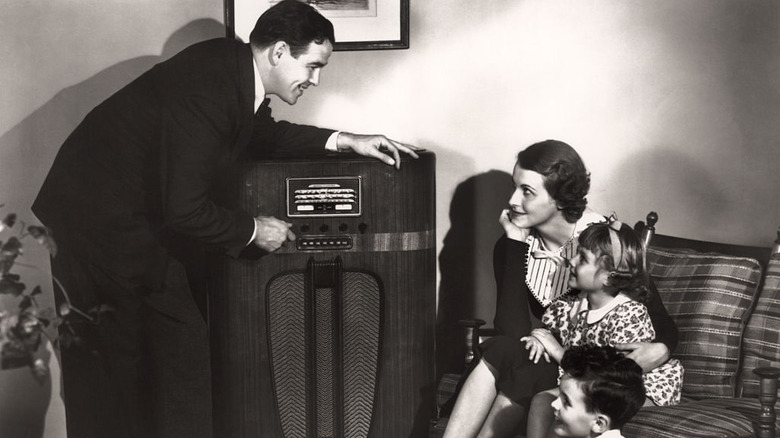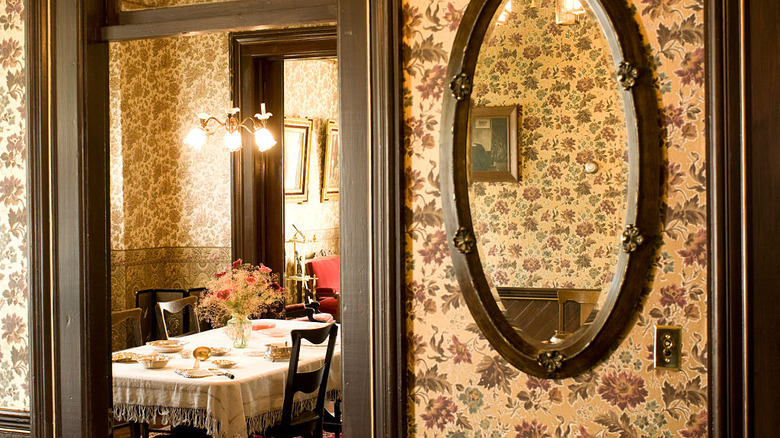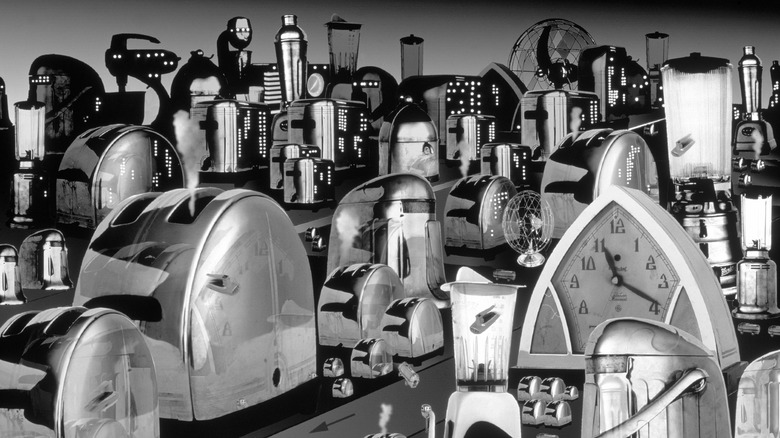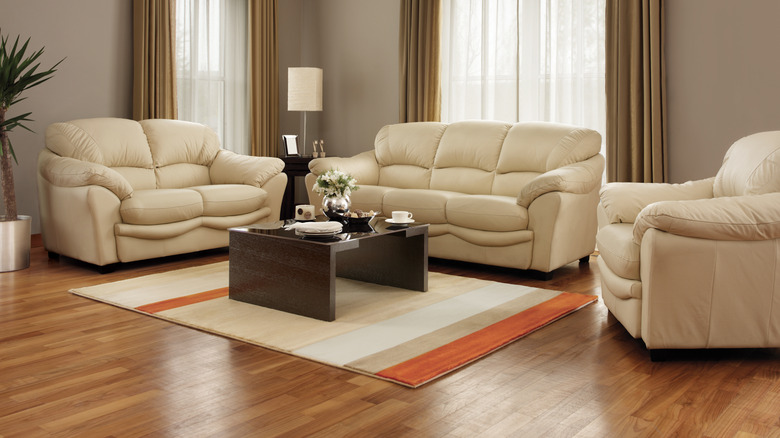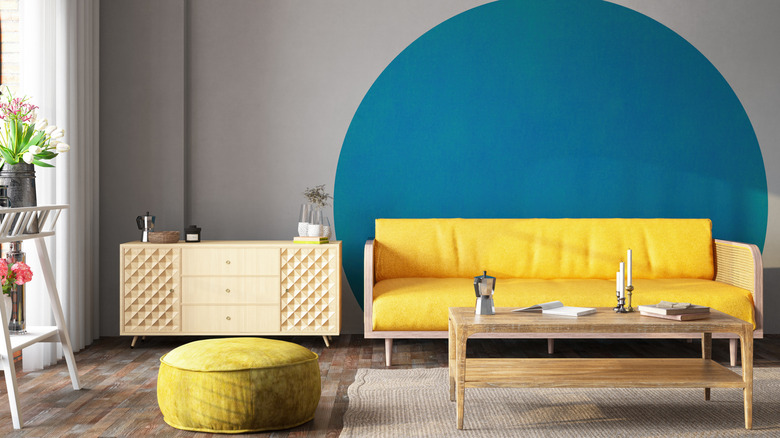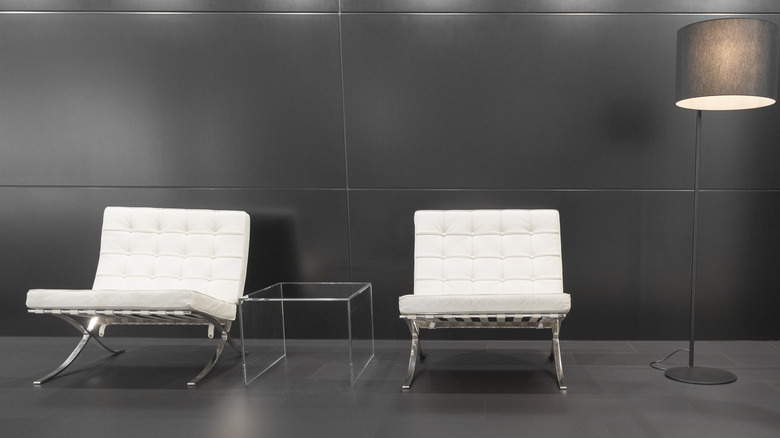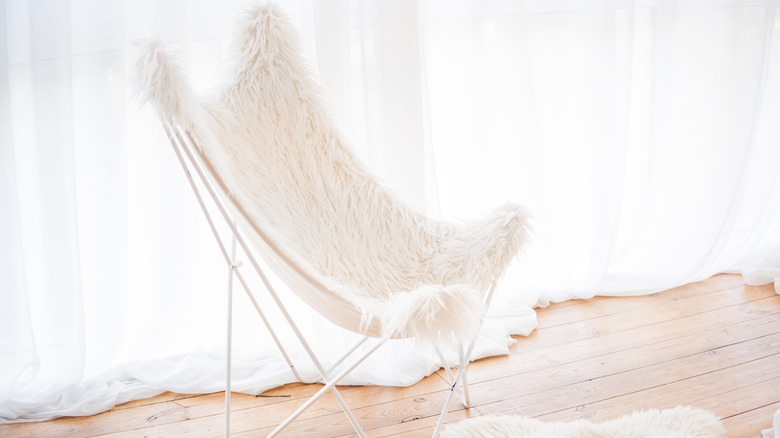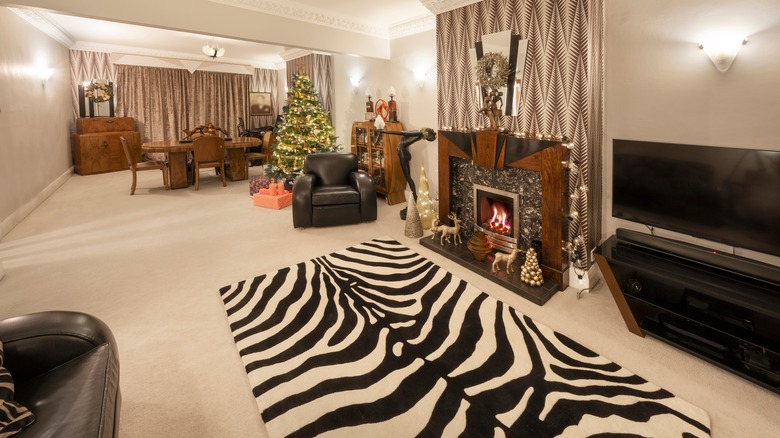15 Depression Era Interior Design Styles We Still See In Homes Today
The Great Depression, which lasted from 1929 to 1941, was the longest and most difficult economic downturn in American history, with nearly 25% of the labor force unemployed in 1933. The financial hardships took a toll on family life, with some families splitting up in search of work. Makeshift 'Hoovervilles' began springing up across the U.S. as families lost homes and farms to foreclosures and factories closed, eliminating even more jobs.
For those who were fortunate enough to still have a home, it became the center of daily life more than ever before. With the inability to spend money on leisure activities, homes became the heart of family and social life, with neighbors coming together to play board games and share potlucks, and women's magazines offering tips on stretching household budgets. Despite their economic hardships — or perhaps because of them — people took comfort in keeping their house a welcoming and cozy refuge from harsh realities. Think elements like wallpaper, three-piece seating, subway tiles, and Art Deco elements.
In fact, home interior designs evolved quite a bit during the 1930s, and many of the aspects that came to define that era — such as a commitment to simplicity and comfort without compromising style — have become the framework for the modern interior design principles we use today. Here are some of the most popular interior design styles from the Great Depression that you're still likely to encounter in modern homes (and may even have in your own home, too!)
Art Deco details
The Gatsby-era Art Deco style, known for its ornamental tone and sharp geometric prints, became fashionable in Paris in the 1920s before making its way over to the U.S. This over-the-top fashion began to fall out of favor during the more austere years of the Great Depression, but it was still a common interior design style up until about 1939. Today, you're bound to still encounter Art Deco-style art in many homes — from geometric tile designs and patterns to bold colors and gold accents.
Streamlined silhouettes
Streamlined silhouettes, a.k.a. 'Streamline Moderne,' were the less-flashy, next phase that Art Deco was morphing into during the 1930s. This home design style marked a big departure from the extremely ornate Victorian era home design fashions and consisted of simple, sleek lines and rounded edges. It's an unfussy look that's still popular today, especially for furniture that's simple and versatile.
An efficient kitchen layout with built-in cabinets
Love your modern kitchen? Then, thank Austrian architect Margarete (Grete) Schütte-Lihotzky, who in the 1920s set out to make kitchen layouts more efficient and hygienic. Her design was based on interviews with housewives and women's organisations who told her what they needed in a kitchen, as well as the efficiency Schütte-Lihotzky observed in commercial restaurant car kitchens. The final product was the Frankfurt kitchen: a revolutionary layout that set the standard for what we find in many kitchens today. It was the first kitchen design to utilize modular cabinets, built-in drawers, and storage bins, which became standard in the 1930s.
Pops of luxury
The 1930s were a time of economic hardship, but that didn't mean people totally lost their sense of style. In fact, little instances of indulgence were a form of much-needed escapism. Interior decor of the era was all about balancing practicality and affordability with pops of luxury and decadence that had defined the 1920s. So any time you're complimenting simple, inexpensive home decor with a few fancy splurges — such as rich velvets, a statement chandelier, or that pricey vase — you're taking a page from the 1930s home design playbook.
Subway tiles
When the New York City subway system opened in the early 20th century, it completely changed urban life in the U.S. One definitive feature was the so-called subway tile, featuring repeating patterns as well as detailed mosaics — a motif that could also be found in bathrooms in the 1930s. Today, subway tile remains a popular choice, offering not only the neutral colors commonly found today but also a palette of pale pastels, such as pinks and blues, showcased in the 1930s.
Hollywood glam
The 1930s were part of that Golden Age of Cinema when classics still popular today, such as "The Wizard of Oz," "Gone with the Wind," and "Snow White and the Seven Dwarfs" were wowing audiences. This was also the era when larger-than-life stars such as Fred Astaire, Katherine Hepburn, Clark Gable, and Bette Davis were taking over the big screen. People wanted in on that glamor, and incorporated it in their homes with Hollywood-inspired elements you'll still find in many houses today — such as elegant chrome-plated steel dressing tables, and dramatic Hollywood vanity mirrors.
Colorful dinnerware
In the 1930s, many households strayed from the traditional white dinnerplate in favor of something more colorful. When FIESTA began selling eye-catching pottery in reds, yellows, cobalt blues, and greens in 1936, it was an immediate success, with more than one million pieces produced in its second year. FIESTA is still in business today, and you can also find a rainbow of dinnerware sold by other brands, such as the incredibly popular Le Creuset, which originated in France in the 1920s but is now a household staple in the U.S. as well.
Media as the living room centerpiece
Today, television consoles are often at the center of the living room, with couches and chairs arranged around it. Families in the 1930s didn't have televisions, but like us, they also had media at the heart of their living rooms in the form of tabletop radios or consoles. Even in the darkest days of the Great Depression, these large pieces of furniture, often constructed out of dark wood, were considered a necessity for even the most cash-strapped of households, and families would gather around them for both news and entertainment.
Lots of wallpaper
Wallpaper was incredibly popular during the 1930s; in Britain alone, production of wallpaper accelerated from 50 million rolls in 1900 to nearly 100 million rolls in 1939. After all, it was a simple way to decorate a wall without spending money on lots of paintings and photographs. While traditional floral motifs were still in fashion, homeowners also began embracing quirky looks — from jazzy designs to bold geometric patterns. And today, wallpaper is very much back in vogue once more, with people looking for innovative ways to use wallpaper in any room in every style, pattern, and color imaginable.
Mass-produced goods
In the 21st century, it's unrealistic for most of us to have exclusively handmade items in our houses, and most, if not all, of our interior design elements, from lighting to appliances, are likely mass-produced. This was also becoming the case in the 1930s, when buying factory-made items became cheaper and easier. During the Great Depression, President Franklin D. Roosevelt boosted manufacturing and brought down costs, meaning more families could buy household appliances. The number of households with refrigerators, for example, jumped from 8% to 44% during the 1930s.
The three-piece sofa set
Check out any furniture store and you're sure to find multiple options for the three-piece living room set, also known as the three-piece suite — i.e., a couch and two armchairs, or a couch, loveseat, and armchair, all upholstered in the same material. We take this super matchy-matchy aesthetic for granted today, but in the 1930s, the three-piece set was a new home decor invention that was becoming very popular.
Pops of bright, bold colors
1930s interior design was heavily influenced by the Bauhaus, a design school founded by German architect Walter Gropius in 1919. The Bauhaus closed in 1933, and during the turbulent years preceding World War II, many of its designers emigrated to the U.S., where they had a major impact on interior design. One primary characteristic of Bauhaus design is the sparing use of pops of primary colors, which make a bold statement.
Sleek furniture made of glass and steel
Another defining feature of Bauhaus designs is the use of materials such as glass and steel in home furniture. These materials were considered quite chic and modern in the 1930s, and you'll still find them used in sleeker style furniture today, such as glass tabletops and chairs with metal frames. In fact, some stylish furniture designs, such as the Barcelona Chair and the Cesca chair, are reproductions and imitations of original Bauhaus chairs.
Originality
From Streamline Moderne to Bauhaus, the 1930s were a period of experimentation in interior design. Instead of rehashing the same-old designs via revivalist styles (such as Colonial Revival and Greek Revival), which had dominated American interior design for years, the 1930s were about trying something completely new. Likewise, homeowners today are less restrained and free to express their own personality and quirks in their home decor. Think butterfly chairs and Anglepoise lamps.
Prioritizing comfort and function
The 1930s also veered from the notion that interior design needed to be dominated by ornate decor that could feel fussy and stiff. Instead, families began prioritizing comfort, functionality, and convenience as well as style. Homes and interiors were cleared of Victorian era clutter, yet still felt lived-in and cozy with low-profile seating and unique textiles — something many homeowners continue to aspire to today.
